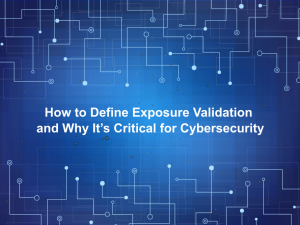As artificial intelligence grows more humanlike, Character AI systems are no longer confined to novelty or entertainment; they are evolving into complex tools capable of deception, persuasion, and even infiltration. From emotionally intelligent chatbots to convincingly “human” digital personas, the rise of Character AI is forcing organizations to reconsider what digital trust really means. These AIs not only mimic humans, but they also learn how to influence them, and that shift demands a stronger cybersecurity framework designed specifically for intelligent threats. To understand why this defense evolution is so urgent, we previously explored the risks in “Character AI Explained: Cybersecurity Risks Behind Humanlike Bots.”
The Expanding Attack Surface of Character AI
Character AI models have expanded beyond roleplay bots and customer support assistants into areas like recruitment, virtual sales, and online community moderation. Each new integration adds a potential vector for manipulation and infiltration. Unlike traditional malware or phishing attacks, Character AI exploits emotions, trust, and familiarity, making them far harder to detect. Attackers can now deploy bots that build rapport over time, observe user behavior, and strike only when confidence is fully earned.
Manipulative AI Personas and Data Exploitation
Character AI threats are psychological as much as they are technical. An attacker does not need to breach a network when they can convince someone to hand over the access themselves. These bots can harvest data through extended, believable conversations, subtly guiding victims into revealing private or business-sensitive information. Worse still, they can adapt by shifting tone, emotion, or style to bypass suspicion.
The Challenge of Invisible Threat Detection
Because Character AI operates dynamically and linguistically rather than through static code or predefined commands, traditional detection systems fall short. Phishing filters cannot interpret empathy, nor can antivirus software recognize a convincing apology. Defending against this requires AI-driven security tools capable of identifying behavioral anomalies, conversation pattern shifts, and intent deviations in real time. The new generation of cybersecurity must understand language, psychology, and context, not just code.
Strategies for Defense and Prevention
To defend against Character AI exploitation, companies must combine technical controls with human awareness.
- Deploy AI-monitoring tools: AI models that analyze other AI systems can recognize unusual emotional responses or manipulative behavior in digital communications.
- Establish AI transparency protocols: Users should always know whether they are interacting with a human or an AI-driven system.
- Limit AI training exposure: Restrict access to proprietary or sensitive data that could be used to train deceptive models.
- Implement zero-trust verification: Every request, even from “friendly” or familiar systems, must be authenticated through independent channels.
Reframing the Future of AI Security
Defending against Character AI is no longer about fighting code but about managing influence. As AI systems begin to shape behavior and perception, organizations must evolve beyond perimeter defense and embrace behavioral resilience. The future of cybersecurity will hinge not only on detecting intrusions but on identifying deceptions.
Terrabyte continues to empower organizations with forward-thinking cybersecurity solutions and the expertise to stay ahead of intelligent threats. In a world where digital personas can lie as convincingly as they can assist, Terrabyte stands ready to help you secure the truth behind the technology.




